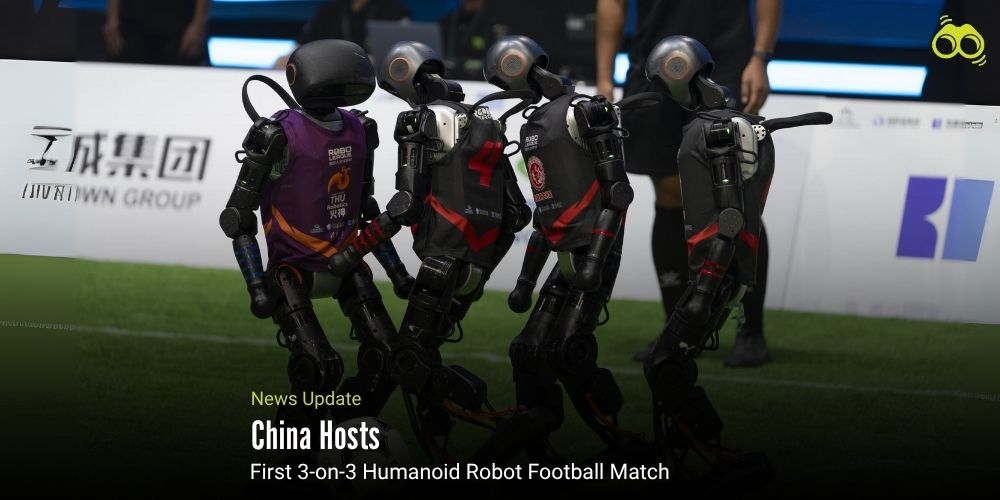Robot Football Takes Centre Stage Ahead of World Humanoid Games
Tsinghua Wins as Humanoid Robots Compete in Historic 3-on-3 Match
In a remarkable fusion of artificial intelligence and sport, Beijing recently hosted China’s first-ever fully autonomous humanoid robot football match, offering a compelling glimpse into the future of robotics and competitive play. Held on the night of 28 June, the 3-on-3 contest featured four teams of humanoid robots operating entirely without human intervention, serving as a high-tech preview to the upcoming World Humanoid Robot Games scheduled for August in the capital.
According to organisers, the key highlight of the event was the complete autonomy of the participating robots, made possible through sophisticated AI algorithms. These robots relied entirely on AI-powered strategies to make decisions in real time, with no external control or human supervision. Each robot was fitted with advanced visual sensors that enabled it to detect the ball, assess the field, and coordinate movement independently. Additionally, they were engineered with the ability to rise unaided after falling, showcasing a notable level of mechanical agility and self-adjustment.
Although the match demonstrated impressive capabilities, several robots had to be carried off the field during gameplay, underscoring both the advancements achieved and the challenges that remain. Nevertheless, the event represented a milestone in China's accelerating efforts to advance AI-driven humanoid robotics, with sports like football, boxing, and marathons increasingly used as experimental platforms.
Cheng Hao, founder and CEO of Booster Robotics, the company that supplied the robot hardware, emphasised that sports environments provide ideal conditions for testing and improving humanoid robot performance. He highlighted that such competitive settings accelerate algorithm development and the integration of hardware and software systems. Moreover, Cheng stressed that safety remains paramount, suggesting that, in the future, robots could play alongside humans provided they meet stringent safety standards. He further noted that matches involving real offensive and defensive engagement, regardless of the result, can help build public trust in the safe interaction between robots and humans.
Cheng also explained that while Booster Robotics provided the physical platforms, it was up to the individual university teams to develop and implement their own AI algorithms. These included mechanisms for perception, in-game decision-making, team formations, and passing strategies, each calibrated to account for variables such as ball speed, force, and direction. Ultimately, in the final match, Tsinghua University's THU Robotics team emerged victorious, defeating China Agricultural University's Mountain Sea Team with a score of 5–3 to claim the championship. This event highlighted the potential of autonomous robotics in sport and marked a significant step forward in China’s technological ambitions.
Editor’s Note:
China’s recent demonstration of a fully autonomous robot football match is more than just a display of technology; it highlights the country’s growing focus on using artificial intelligence in real-world, visible ways. By using sports as a testing ground, China is creating opportunities to improve AI systems under real-time pressure, where quick decisions, movement, and teamwork matter. These events help developers learn how AI responds in unpredictable situations, leading to smarter and more flexible machines. What stands out is China’s effort to make these advancements public. Whether in industries, education, or entertainment, the country is showing how AI can be introduced into daily life in a safe and useful way. The football match featuring strategy, movement, and even self-correction offered a small but powerful glimpse into a future where robots and humans may interact more naturally. China sees AI not only as a scientific goal but also as a key part of its progress and innovation.
Skoobuzz underlines that robotics is rapidly moving from labs to daily life, with AI-driven machines poised to become active partners in work, learning, and play. This shift marks a future where humans and robots collaborate more closely than ever before.














0 Comments (Please Login To Continue)